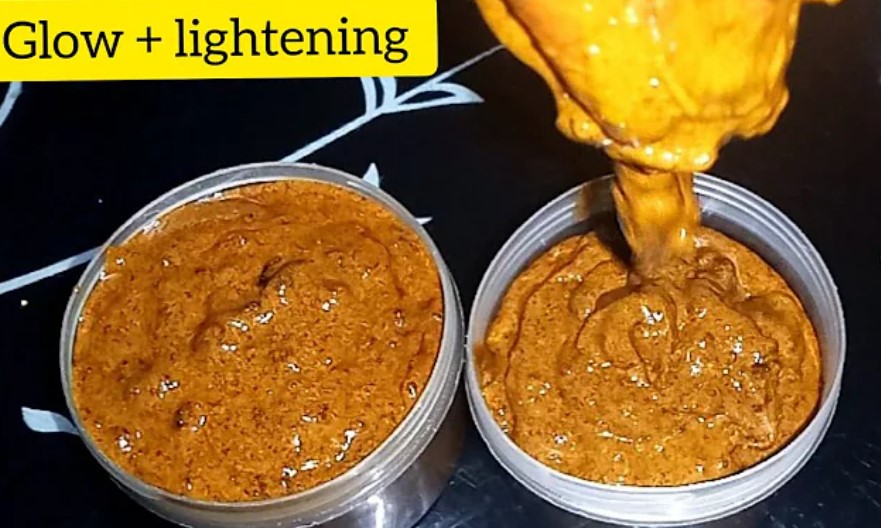Skin brightening and lightening
Achieving and maintaining skin brightening and lightening results requires a holistic approach that combines skincare practices, sun protection, and overall skin health.

Skin brightening and Lightening
Skin brightening and lightening refer to improving the skin’s appearance by reducing hyperpigmentation, dark spots, uneven skin tone, and dullness. Many individuals seek brighter and even-toned skin for various reasons, including addressing age spots, sun damage, acne scars, or achieving a more radiant complexion. It’s essential to prioritize gentle, consistent care and embrace a long-term commitment to achieve the desired outcomes.

Skin Brightening Ingredients:
Numerous skincare products contain ingredients known for their skin-brightening and lightening properties. Some common ones include:
- Vitamin C: Ascorbic acid, a form of vitamin C, is a potent antioxidant that inhibits melanin production and helps fade dark spots.
- Alpha Hydroxy Acids (AHAs): AHAs like glycolic and lactic acids exfoliate the skin, promote cell turnover, and reduce discolouration.
- Retinoids: Retinoids, such as retinol, enhance cell turnover, stimulate collagen production, and help fade pigmentation.
- Kojic Acid: Kojic acid is derived from fungi and inhibits melanin production.
- Hydroquinone: Hydroquinone is a controversial ingredient that lightens dark spots by inhibiting melanin production.
- Arbutin: Arbutin is a natural ingredient that helps lighten the skin by inhibiting tyrosinase, an enzyme in melanin synthesis.
- Licorice Extract: Licorice extract contains glabridin, which has skin-brightening properties and helps fade dark spots.
Skincare Routine for Skin Brightening
Incorporating the following steps into your skincare routine can help brighten and lighten your skin:
- Cleansing: Use a gentle cleanser to remove impurities and prepare the skin for treatment products.
- Exfoliation: Regular exfoliation helps remove dead skin cells and promote cell turnover. Choose a mild physical or chemical exfoliator suitable for your skin type.
- Treatment Products: Apply serums or creams containing brightening ingredients like vitamin C, kojic acid, or retinoids to target dark spots and pigmentation.
- Moisturizing: Hydrate your skin with a moisturizer suitable for your skin type to maintain its natural moisture barrier.
- Sun Protection: Apply a broad-spectrum sunscreen with a high SPF to protect your skin from harmful UV rays, preventing further pigmentation.
Professional Treatments
You may consider professional treatments performed by dermatologists or aestheticians for more significant results. These may include:
- Chemical Peels: Chemical peels involve applying a solution to the skin, which exfoliates the top layer and helps fade pigmentation.
- Microdermabrasion: This procedure uses a device to exfoliate the outermost layer of the skin, revealing a brighter complexion.
- Laser Therapy: Certain laser treatments, such as intense pulsed light (IPL) or fractional laser resurfacing, can target hyperpigmentation and promote skin lightening.
- Cryotherapy: Cryotherapy involves freezing the targeted areas to treat pigmentation irregularities.
Precautions and Considerations
Patch Test: Before using any new skincare product, perform a patch test to check for any adverse reactions or allergies.
Sun Protection: Protecting your skin from the sun is crucial when aiming for skin brightening and lightening. Sun exposure can worsen existing pigmentation and cause new dark spots to form. Therefore, always apply a broad-spectrum sunscreen with a high SPF before going outside, regardless of the weather or season. Additionally, consider wearing protective clothing, hats, and sunglasses to shield your skin from harmful UV rays.
Consistency: Achieving noticeable skin brightening and lightening results requires consistency and patience. Incorporate the recommended skincare routine and products into your daily regimen and stick to it for an extended period. It may take several weeks or months before you see significant improvements.
Gradual Approach: It’s essential to take a gradual approach when using potent skin-brightening ingredients or professional treatments. Start with lower concentrations or shorter treatment sessions to minimize the risk of irritation or adverse reactions. Then, gradually increase the intensity or frequency as tolerated by your skin.
Skin Type Considerations: Different skin types may react differently to skin brightening and lightening products. Some ingredients or treatments may be more suitable for specific skin types. If you have sensitive or acne-prone skin, consult a dermatologist or skincare professional to determine the best approach for your needs.
Potential Side Effects: Some skin-brightening ingredients, such as hydroquinone, may carry potential side effects like skin irritation, redness, or hypersensitivity. If you experience any adverse reactions, discontinue use and consult a healthcare professional.
Professional Guidance: If you have severe hyperpigmentation or stubborn dark spots or are unsure about the best approach for your skin, it’s recommended to seek professional guidance from a dermatologist or skincare specialist. They can assess your skin condition, provide personalized recommendations, and perform targeted treatments if necessary.
Causes of Skin Darkening:
Skin darkening can occur due to various factors, such as overexposure to the sun’s harmful UV rays, hormonal changes, inflammation, acne, ageing, genetics, and certain medications. These factors can stimulate melanin production, the pigment responsible for skin colouration.
Resource:
Boo YC. Arbutin is a Skin Depigmenting Agent with Antimelanogenic and Antioxidant Properties. Antioxidants (Basel). 2021 Jul 15;10(7):1129.
Saeedi M, Eslamifar M, Khezri K. Kojic acid applications in cosmetic and pharmaceutical preparations. Biomed Pharmacother. 2019 Feb;110:582-593.





